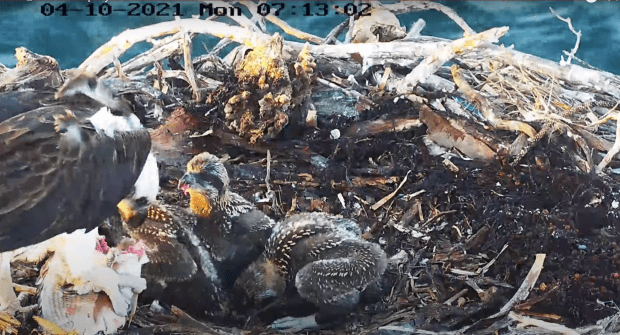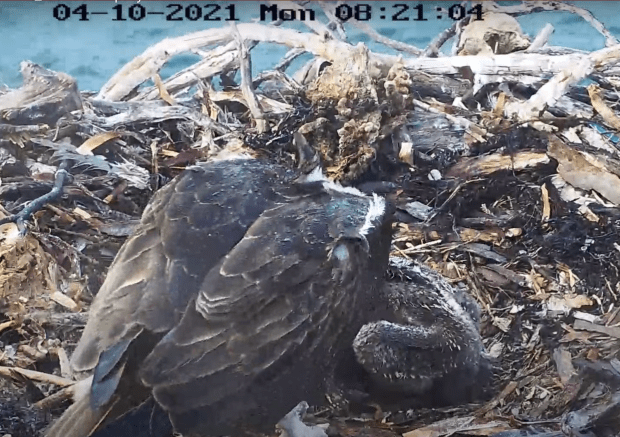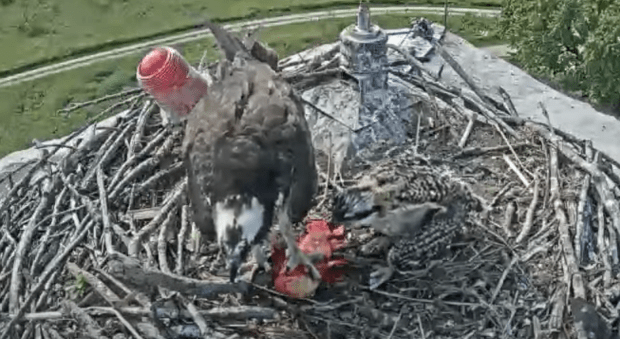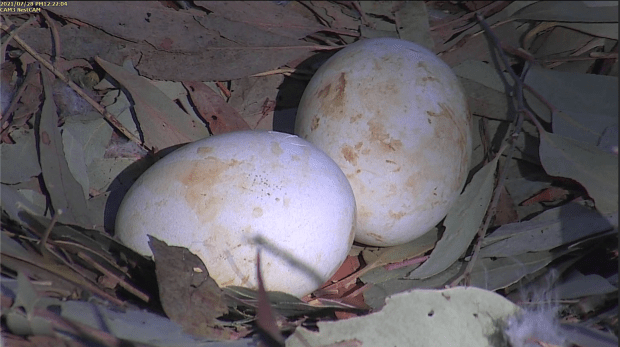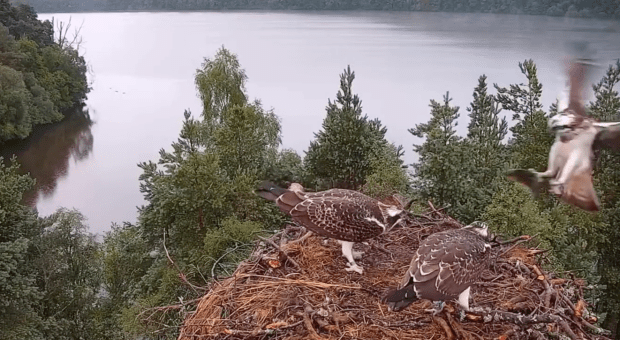21 October 2022
It is 14 degrees C in Winnipeg. That is really hard to believe and it is almost 2200. I am again starting my newsletter for tomorrow early. With the improved weather I hope to get some photographs of the birds foraging and building their strength to migrate tomorrow. I wonder if that little fuzzy duckling that was getting its back feathers is still around? Tomorrow will be a lovely day to be outside and this morning newsletter might be my only one for the day with a little brief account late about the breakfast feedings.
Oh, how things change overnight. My super powerful flu shot seems to have given me the flu! I am behind in answering e-mails as a result but I wanted to get the bird news off to you. I plan is to feel better. You hear a lot about my grandmother. She was a great believer in honey ginger tea and sweating out the sickness. We will see if she was right. Have a wonderful day. Thank you!
Making News:
SE30 has been taken into care. The birders on the ground in the vicinity of the Discovery Centre near the Sydney Olympic Forest have been keeping an eye on her. No details are given on what caused her to go into care. It was, however, believed that she had not been fed by the parents. It is very challenging for the WBSE fledglings once they leave their natal nest in the forest. The Magpies and the Currawongs continually chase and harass them. It has been happening for years, never slows down, and always seems to wind up in tragedy for our eaglets that we treasure.
This was the announcement:

There are two main spotters of European Ospreys in their winter homes in Senegal and The Gambia. Jean-marie Dupart reports from Senegal and Chris Wilson reports from The Gambia. The images give you an idea of their winter homes along the coasts of Africa and the inland waters. These are the latest sighting reports by duPart:
Jean-marie Dupart travels to various sites in Senegal reporting throughout the season. You can find his page on FB. Just do a search using his name.

Australian Nest News:
For those that missed it, the second camera at 367 Collins Street has been activated and you can now watch the comings and goings of the Melbourne Four. So grateful to Mirvac for acting so quickly. We were all in a panic.
The heat from the sun was such a worry especially with this first time falcon mother leaving her eyases for extended periods of time. When she was with them in the heat of the day, Mum made a magnificent umbrella. ‘A’ and I were counting the days until the eyases could run down the gutter to the other end and get in the shade. This area is also protected from the rain. Perhaps the four will persuade Mum to choose that end next year to lay her eggs!

Rubus and Indigo could have their own comedy programme on cable television. What a pair they are.
Rubus and Indigo have had 3 feedings so far today. They were leftovers at 070557, a parrot at 074247, and what looks like to be another parrot or rosella at 105333.
Be sure to notice Rubus’s little wing flaps. Seriously. What an adorable eyas. I could watch his antics all day!





Indigo had been flapping her wings and Rubus had been watching. Just look at him give it a go!!!!!!!



There was high hope in Port Lincoln that the arrival of that huge fish at 0649 was a good omen and that many fish would be brought to the nest in quick succession. You can see from Big’s enormous crop that it had a fantastic breakfast. Middle had some beaking from Big but, wound up with a nice crop, too.
The pattern has been that Big is not so ‘grumpy’ at breakfast but gets more anxious as the day progresses. This translates into the beaking of Middle. It is now after noon and a second fish is yet to arrive.
The cam operator did give us some wonderful close ups. You can see the feather development on Big.
Please note that Port Lincoln have set the 12-14th of November as ringing day on the barge. The chicks will get their names and their measurements should give us an indication as to their gender. What do you think?


The amber eyes of the youngsters will change to yellow when they are adults. The only exception to this that I know is Monty at the Dyfi nest in Wales. He kept his amber eyes – something that was very striking in an adult bird.





At 1300 Dad brought in a flat fish – at times it looked like one of the Zebra fish. It looked a little stiff. Middle immediately took the fish doing a superb mantling job. Big was not going to let Middle have a whole fish to himself and a brutal attack occurred. Big took the flat fish while Middle was curled up in submission. Big managed to open the fish and eat.


Yeah for Middle!




Middle defends himself and the fish.


Big uses her brute strength and size to push Middle over. Look at her enormous legs and feet.

Big also has quite the bottom – a sign of a chick that has not gone without.


Having whipped Middle into submission, Big moves over to the rim of the nest. She has completely forgotten about what she was fighting for.

Then she remembers.

Big was able to find a place and tear off the skin and eat.

At 1312 Mum flies in with a whole big fish. She caught it. You can see the white feathers of her fluffy behind are wet. Big immediately drops the fish Dad brought and moves up to Mum to be fed. Middle stays in submission. At 132939 Middle moves over and Mum begins to feed her second chick. Six minutes later, Big decides he wants more fish! He eats, moves, then Mum feeds Middle again.


Once Big leaves, Middle moves over slowly to get some food. Remember. Big ate the majority of the breakfast fish and still had a big crop at 1300. Middle has only had ‘some fish’ – hard to tell how much but, clearly Middle needs to eat much more, just like Mum does.


Big gets a hankering for more fish.

Topped up, Big goes to watch the water while Mum finishes up the big fish she caught. I bet she thought she might get to eat something, too. Big reminds me so much of the second hatch at Achieva Ospreys in 2021. That osplet would eat and eat just to spite everyone else.

At 1346 Mum takes the flat fish and begins to feed Middle. She will move this fish and eat some herself. She is ‘very’ hungry. These two leave little fish for her.


Middle has a crop. Mum must eat to replenish her energy.

Mum ate some but could not ignore Middle’s calls for fish. She turned around and fed Middle and, at the end, treated herself to the fish tail. I want you to look at the size of Middle’s crop. There are no worries for Middle. If he gets no more food today, he will be fine. If he does, it will be a bonus.
Note the time. Mum has really been feeding these chicks! She should get a reward for looking out for Middle. She has certainly done that in very subtle ways the last two days.
Middle’s crop is just about to pop!

Migration News:
There are no new transmissions for Karl II who was in Egypt and Kaia who was in Chad. They could be in areas with very little service. Everyone was quite worried because no transmission had come in for Bonus. It is well known by the data kept in Estonia, that only 20% of Black Stork fledglings survive their first migration. This caused much anxiety and then…Bonus’s data came in. He is still in Romania near Latinu.

Waba had his breakfast at a lake formed by the Koca Stream (?) then he flew 284 km and was at Baklankuyucak, Turkey.


Send all your warm wishes for their continued safe travels.
Thank you so much for joining me. Take good care of yourselves. See you soon!
Thank you to the following for their posts, their videos and streaming cams that make up my screen captures: Sea Eagles Cam FB, Jean-marie Dupart FB, Charles Sturt Falcon Cam and Cilla Kinross, 367 Collins Street by Mirvac, Port Lincoln Ospreys, and Looduskalender Forum.




































